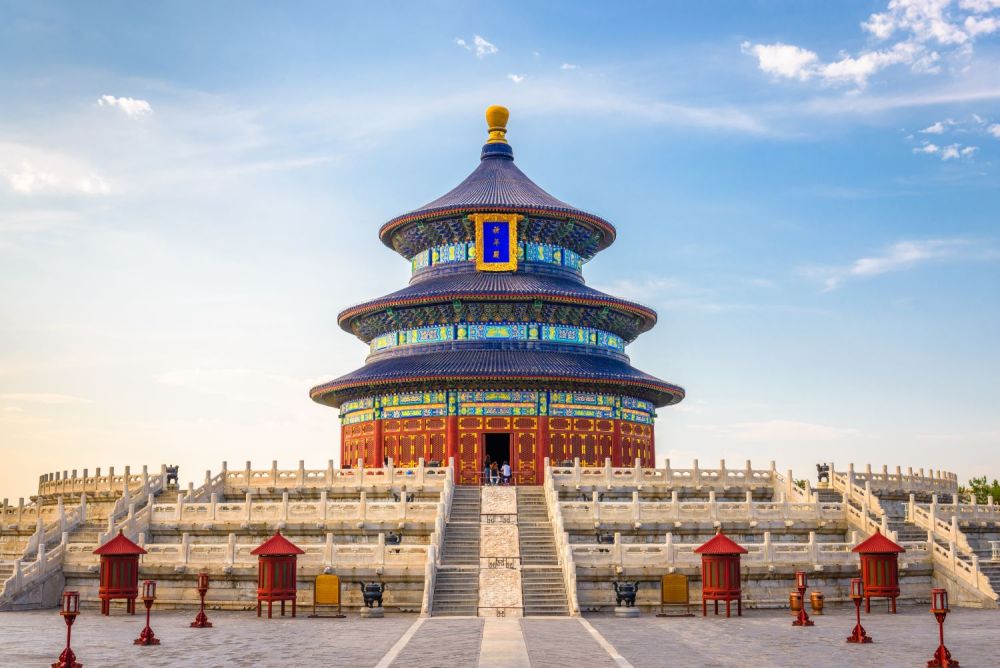

The Temple of Heaven, known as 'Tiantan' in Chinese, is a complex of religious buildings situated in the southeastern part of central Beijing. It is one of the country's most revered religious sites and has a rich history that extends back to the early 15th century.
Constructed from 1406 to 1420 during the reign of the Yongle Emperor of the Ming Dynasty, the Temple of Heaven was where emperors of both the Ming and Qing dynasties would conduct the annual ceremonies of prayer to Heaven for a good harvest. Its architecture and layout have deep philosophical meanings and reflect the mystical cosmological laws believed to be central to the harmony and prosperity of the universe.
Originally the Temple of Heaven was exclusively accessible to the emperor, the son of heaven, who was the only person allowed to directly communicate with Heaven. The site was off-limits to ordinary people. However, after the fall of the Qing Dynasty in 1911, the Temple of Heaven was turned into a park, opening its gates to the public. Since then, it has become a popular site for not only tourists but also local residents who engage in daily exercises, dance, and cultural activities within its grounds.
In 1998, the Temple of Heaven was inscribed on the UNESCO World Heritage List, which marked a new stage in its history of tourism as it garnered international recognition for its outstanding cultural significance. This event played a crucial role in placing the Temple of Heaven on the global tourism map and has contributed to the significant increase in visitor numbers.
With the rapid development of Beijing as a major global city and tourist destination, especially in the run-up to and after the 2008 Olympic Games, the importance of the Temple of Heaven as a tourist attraction has only increased. The site has seen renovations and improvements to not only preserve the ancient structures but also enhance the visitor experience with modern amenities, such as visitor centers and audio guides.
Recently, there has been a growing trend towards cultural and experiential tourism, with visitors seeking to engage with the history and culture of the places they visit more deeply. The Temple of Heaven responds to this trend by offering more interactive and culturally immersive experiences such as guided tours that provide insights into the complex's history, architecture, and spiritual significance.
In the digital age, technology has also changed the way visitors experience historical sites. Augmented reality apps and virtual tours have been developed to offer a new dimension to exploring the Temple of One's rich past, attracting tech-savvy tourists and providing a way for people to visit virtually from across the globe.
Sustainability is another increasingly relevant trend in tourism. Efforts have been made to manage the environmental impact of tourism at the Temple of Heaven, ensuring that this historical treasure can be preserved for future generations to appreciate.
In conclusion, the Temple of Heaven in Beijing is a magnificent example of imperial architecture that has stood the test of time. Its transition from a sacred site exclusive to emperors, to a public park, and then to a recognized World Heritage site illustrates the evolving interaction between culture and tourism. The Temple continues to attract visitors worldwide with its deep cultural roots, serene beauty, and the continuing evolution of the tourist experience it offers.